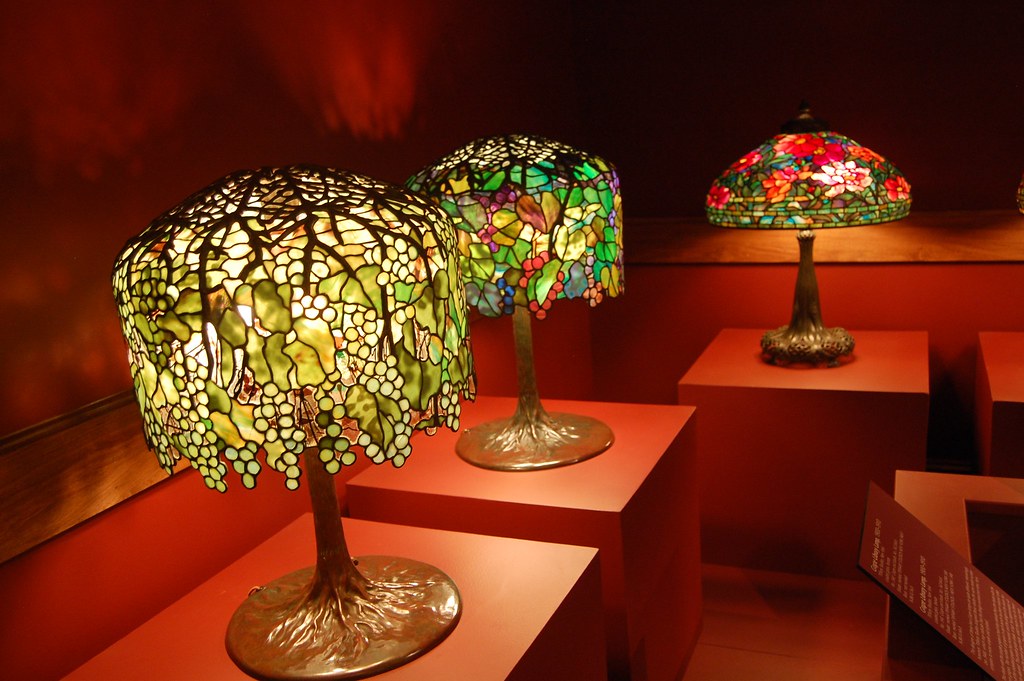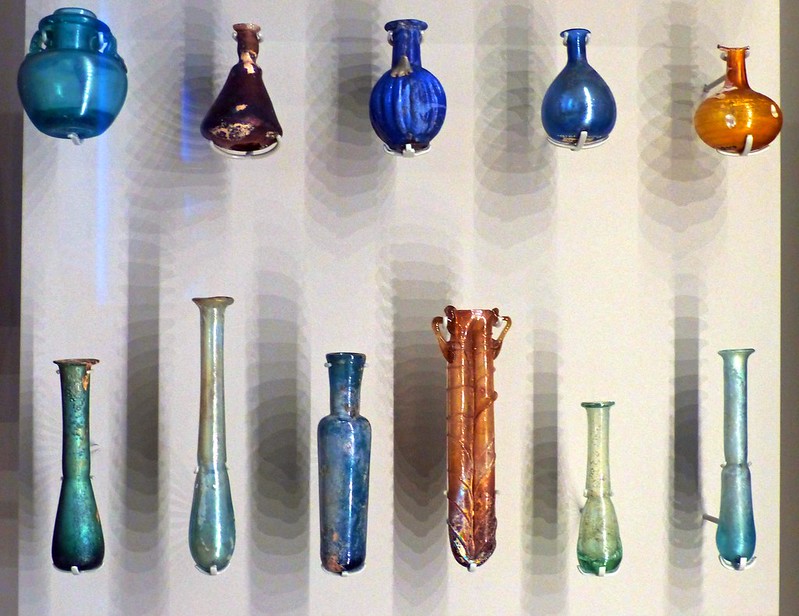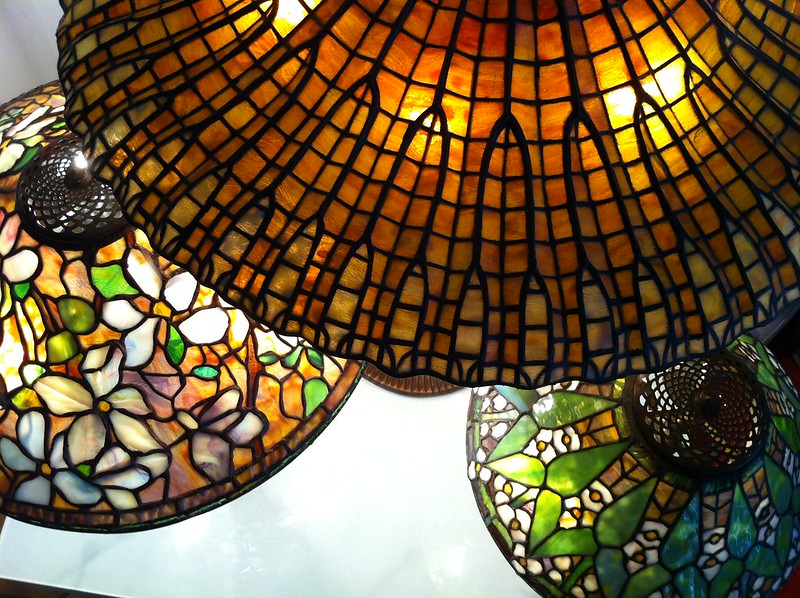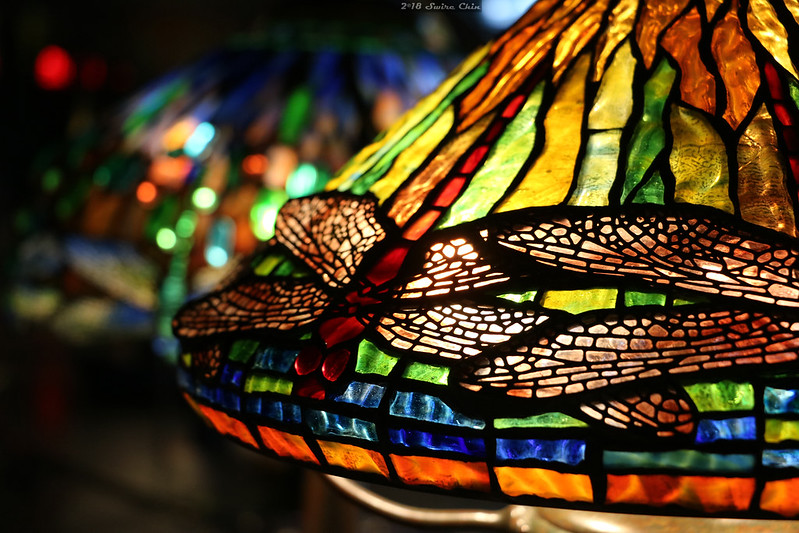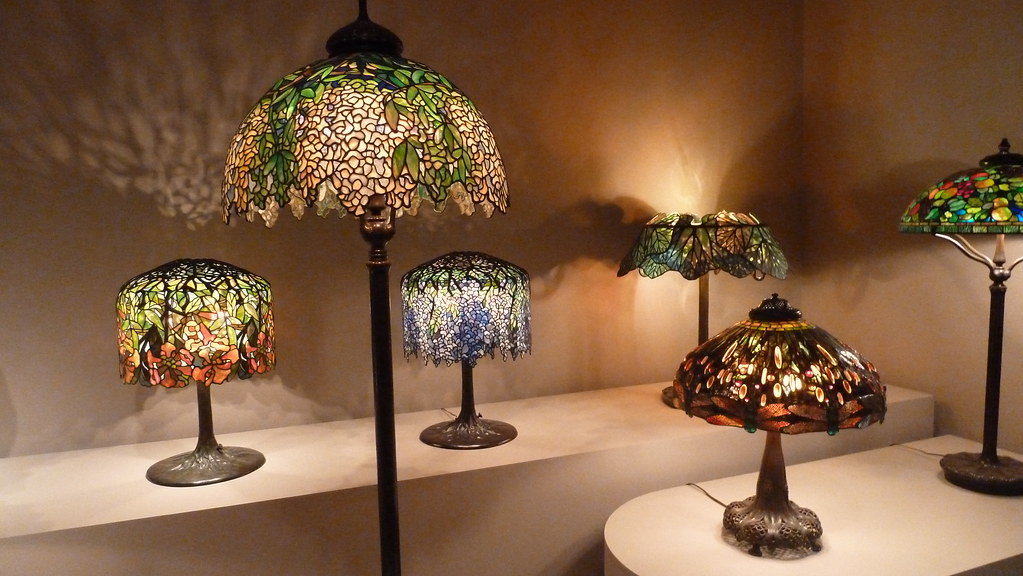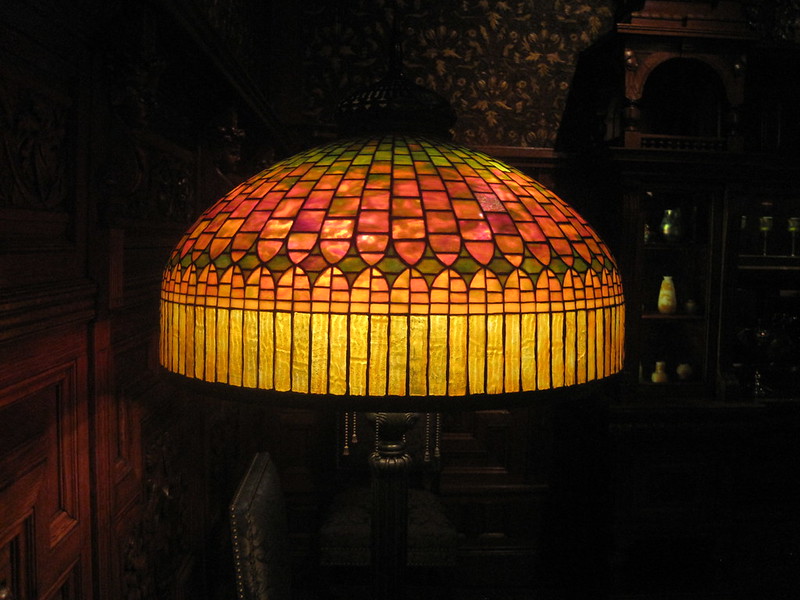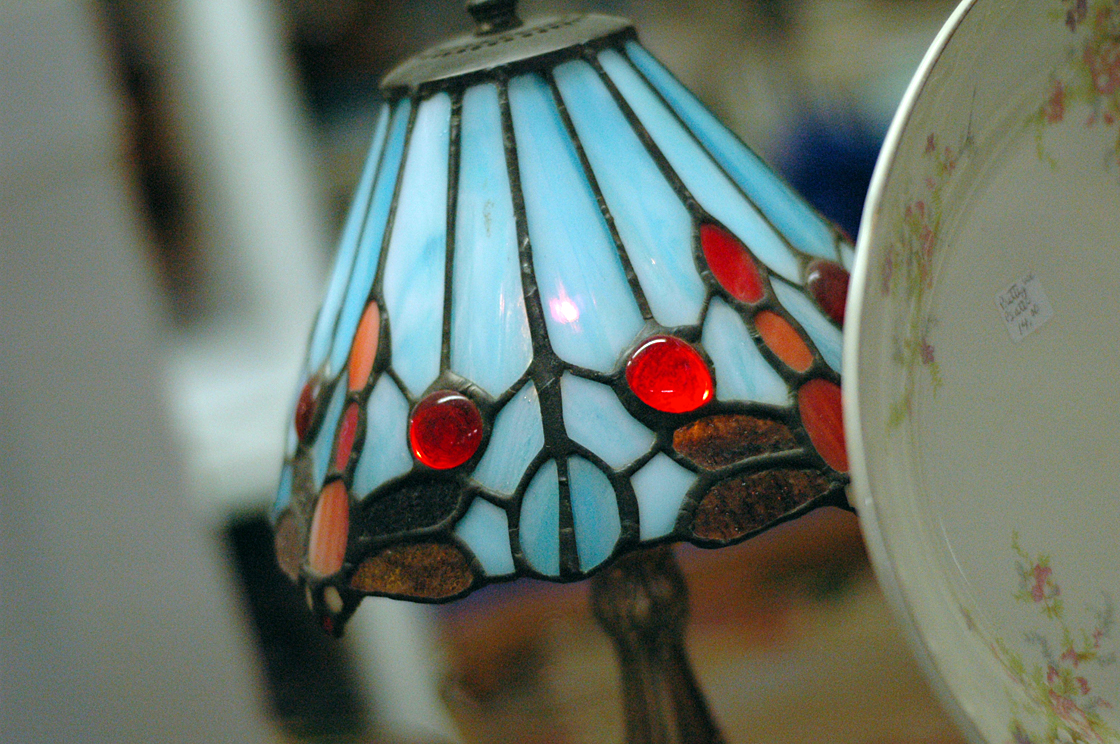For over 100 years, the Tiffany lamp has dazzled as a decorative art icon. Celebrated for its handmade craftsmanship and known for its stained glass shade, Louis Comfort Tiffany’s lamp remains a fixture in museums and living rooms alike.
Here, we explore the illuminating history of this design in order to shed some light on its long-lasting legacy.
Louis Comfort Tiffany
In 1848, Louis Comfort Tiffany was born in New York City. As the son of Charles Lewis Tiffany, the founder of jewelry retailer Tiffany & Co., Tiffany was exposed to decorative art and design at a young age. This influence culminated in a career that spanned several different disciplines. “I have always striven to fix beauty in wood, stone, glass or pottery, in oil or watercolor by using whatever seemed fittest for the expression of beauty,” he said. “That has been my creed.”
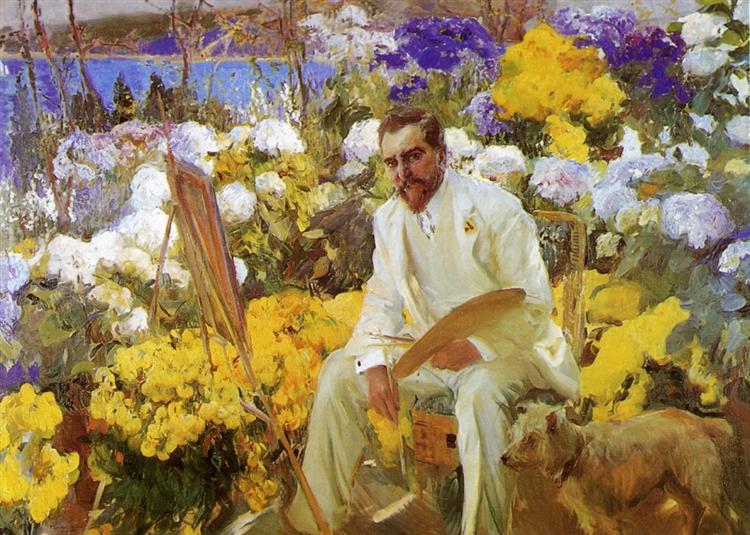
Joaquín Sorolla, “Louis Comfort Tiffany,” 1911 (Photo: Wiki Art Public Domain)
Tiffany was originally trained as a painter. In his 20s, however, he became interested in glassmaking after observing a collection of Roman glass at the Victoria and Albert Museum in London.
Tiffany was particularly attracted to the rustic nature of the ancient glass—a quality that contemporary glass artists rejected. To Tiffany, these imperfections were not only beautiful, but key to achieving eye-catching color. “Rich tones are due in part to the use of pot metal full of impurities,” he said, “and in part to the uneven thickness of the glass, but still more because the glass maker of that day abstained from the use of paint.”
Inspired by this idea, he founded his own glass factory in Queens, New York. In addition to running the factory, Tiffany and a team of designers established Louis Comfort Tiffany and Associated American Artists, an interior design studio. As a decorator, Tiffany proved popular with a range of clients, from wealthy individuals to the president of the United States. Following his successful stint as an interior designer, he decided to dissolve Louis Comfort Tiffany and Associated American Artists and start his own glassmaking firm: Tiffany Glass and Decorating Company.
Tiffany Glass and Decorating Company
Tiffany Glass and Decorating Company was established in 1885. As a glass producer, Tiffany experimented with tone, texture, and even method. With the glass of Ancient Rome in mind, he strived to create colorful pieces without the use of paint or enamel. To achieve this, he developed two important innovations: favrile glass and the copper foil technique.
At the 1893 World’s Fair in Chicago, Tiffany debuted favrile glass—a glass he compared to “the wings of certain American butterflies, the necks of pigeons and peacocks, the wing covers of various beetles.” Unlike the painted iridescent glass of the past, favrile is achieved by mixing different colored glass together while hot.

Favrile Glass Vase (Photo: Met Museum Public Domain)
Similarly, before Tiffany, stained glass windows were held together by thick lead rods soldered at their joints. While durable, this method of bonding did not allow artisans to achieve intricate detail without the use of paint. In order to minimize the outlines and, therefore, eliminate the need for paint, Tiffany created a thin, flexible foil that could discreetly connect pieces of glass without heavy lines or conspicuous joints.
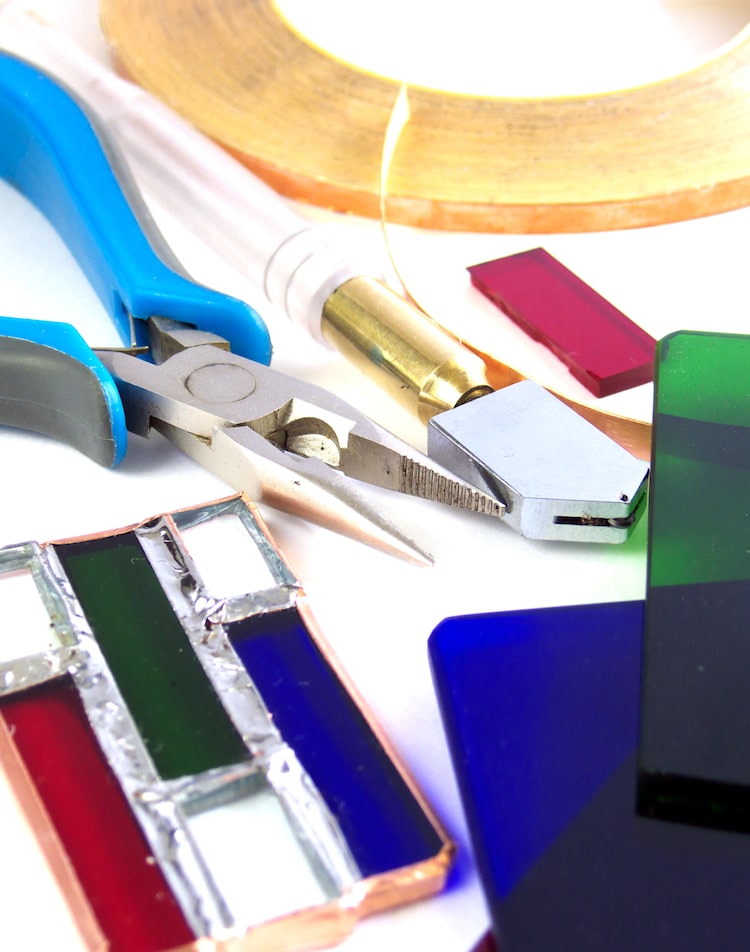
Copper Foil Tools (Photo: Galayko Sergey via Shutterstock)
Tiffany employed both of these methods when conceiving his most significant design: the Tiffany lamp.
Stained Glass Lamps
In 1902, Tiffany Glass and Decorating Company became Tiffany Studio. By this point, the firm was extremely successful and predominantly known for its stained glass lamps, which were handcrafted by a team of over 300 artisans. Though, for over a century, it was widely believed that Tiffany designed these pieces, it has recently been proven that artist Clara Driscoll was actually the brains behind the beautiful designs.
Typical Aesthetic
An icon of the Art Nouveau movement, a typical Tiffany lamp is composed of a bronze stand topped with a stained glass shade. Whether leaded or made with copper foil, each lampshade showcases both meticulous attention to detail and an inherent interest in nature. Intricate patterns and motifs inspired by flora and fauna are particularly prevalent, with daisies and dragonflies serving as popular muses.
Much like the designs that adorn them, the lamps’ silhouettes also often pay homage to the natural world. Many popular Tiffany fixtures are shaped like trees, with the base, stand, and shade acting as roots, a trunk, and foliage, respectively. Similarly, many of these stained glass lampshades feature scalloped and irregularly-shaped edges that suggest flower petals, butterfly wings, and other forms found in nature.
In addition to nature, Tiffany Studio also found inspiration in geometry, culminating in a collection of Arts and Crafts-esque lampshades. Though less ornate than the former, these exquisite lamps remain equally adored. “Whether with understated, minimal accents of color or showy, elaborate design statements,” the Chrysler Museum of Art says, “Tiffany lamps complemented just about every decorative scheme.”
Tiffany Lamps Today
While Tiffany lamps fell out of fashion (and even ceased production) by 1913, they saw a resurgence in the 1950s. Since then, they have become a collector’s item, appearing in private collections, auction houses, fine art museums, and, for some lucky thrifters, even unassuming antique shops and flea markets.
“There are things that were documented that haven’t surfaced for a hundred years,” Tiffany appraiser Arlie Sulka says. “I believe they will. We’re always on the hunt. In fact, I’m having a lot of fun right now because some great things are coming out of the woodwork.”
Related Articles:
7 of the Most Splendid Stained Glass Windows in the World
8 Contemporary Stained Glass Artists Who Are Redefining the Ancient Craft
Art Deco: Exploring the Dazzling Modern Art Movement
Artist Encases Delicate Beauty of Nature in Tiffany-Glass Style Pendant Necklaces

